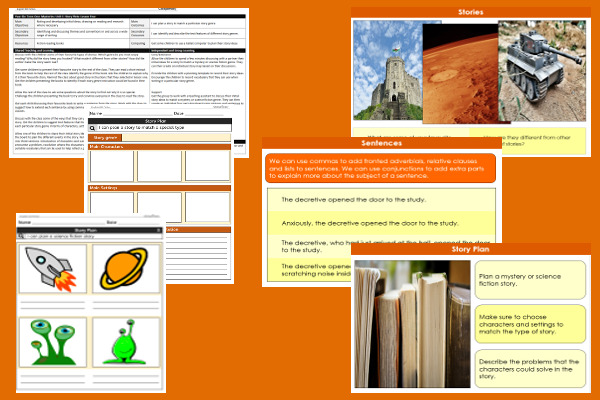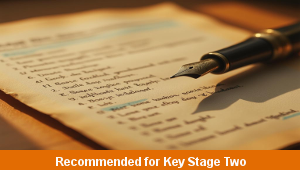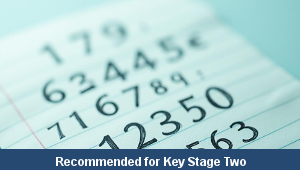Lesson Four – Story Map

This English teaching pack for Key Stage Two gets the children to plan the sequence of events in a story to match the characters, settings and events that can be used in a mystery or science fiction genre to illustrate their special features.
The class can identify and describe the instructions that someone will need to follow when writing a narrative story matching a specific type of genre.
Download this teaching pack including a lesson plan, classroom activities and an interactive presentation to plan the sequence of events in a story to match the characters, settings and events that can be used in a mystery or science fiction genre to illustrate their special features
Activities in this teaching pack include a set of differentiated templates to plan a story to match the characters, settings and events that can be used in a specific fiction genre for core and extension ability levels and record the possible sequence of events for support ability levels.
The interactive presentation gets the children to explore how to plan a story to match the characters, settings and events that can be used in a mystery or science fiction genre.
This lesson is part of an English scheme of work to get the children to investigate how authors use different settings to advance the plot in a story, practise adding the suffixes able and ible to word roots and write complex sentences incorporating punctuation and conjunctions. There are teaching activities for shared learning, differentiated worksheets to support independent learning and interactive presentations to introduce concepts and key skills.
-

Determinant Lists
Explain and model how to make lists of objects used and found in different locations to match the correct determinants of a and an
-

English SPAG Assessment
Assess abilities in composing sentences for fiction and non-fiction using the correct spellings, punctuation marks and grammar vocabulary phrases
-

Maths Arithmetic Assessment
Assess abilities in solving arithmetic number problems for addition, subtraction, multiplication and division when working with informal and formal written calculations
-

Environment
Identify and describe some of the special landscapes and locations that can be found in the world and reflect on how they can be protected and preserved for the future
